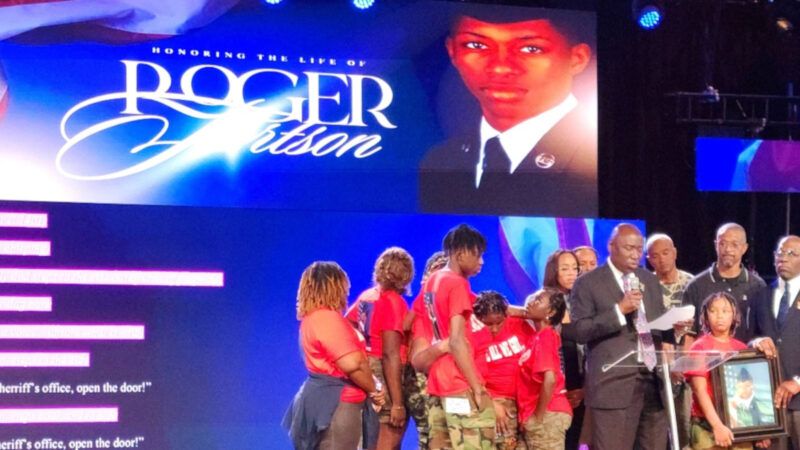The Police Killing of Roger Fortson Shows the Conflict Between the 2nd Amendment and Paranoid Cops
Ben Crump, a prominent civil rights attorney who is representing Fortson's family, said in a recent press conference that police went to the wrong door. A radio dispatcher told deputies that the call was "fourth-party information from the front desk at the leasing office," and body camera footage showed an unidentified woman telling deputies she was "not sure" which door the disturbance came from before directing them to Fortson's apartment. Fortson's family says he legally owned the gun, had no criminal record, and was home alone at the time of the incident.
"We've got to call it as it is—Roger died of murder," Rev. Jamal Bryant said at Fortson's funeral. "He died of stone-cold murder. And somebody has got to be held accountable. Roger was better to America than America was to Roger."
The Okaloosa County Sheriff's Office initially framed the fatal shooting as self-defense.
"Hearing sounds of a disturbance, he reacted in self defense after he encountered a 23-year old man armed with a gun and after the deputy had identified himself as law enforcement," a May 4 statement from the Okaloosa County Sheriff's Office read.
In 2022, Florida resident Corey Marioneaux Jr. was charged with attempted murder of a police officer for shooting a gun at SWAT team officers who had just broken through his front door with a battering ram at 5 a.m. The charges against Marioneaux were later dropped, and an internal review found no wrongdoing on the part of the police either—a simple misunderstanding that could have killed someone.
That same year, a Minneapolis Police Department officer shot and killed 22-year-old Amir Locke during the execution of a no-knock raid. Locke, who was not named in the search warrant, appeared to be asleep under a blanket on a couch. As police entered the room, he put his hand on the barrel of a handgun, and an officer shot him three times.
In 2006, former Reason writer Radley Balko detailed the case of Cory Maye, a Mississippi man sentenced to death for fatally shooting a police officer during a no-knock drug raid.
Republican Florida Gov. Ron DeSantis relentlessly brags about "Free Florida," a supposed refuge from liberal busybodies, where things like owning a gun and not eating vat-grown meat are sacred. The title of his book was in fact The Courage to Be Free. But DeSantis has no courage when it comes to the police. His only priority is giving law enforcement more privileges and insulation from civilian accountability.
Roger Fortson lived in this very same Florida. Now his name will be added to the long list of people who were killed for doing something they were assured was their right as free citizens of the United States.







